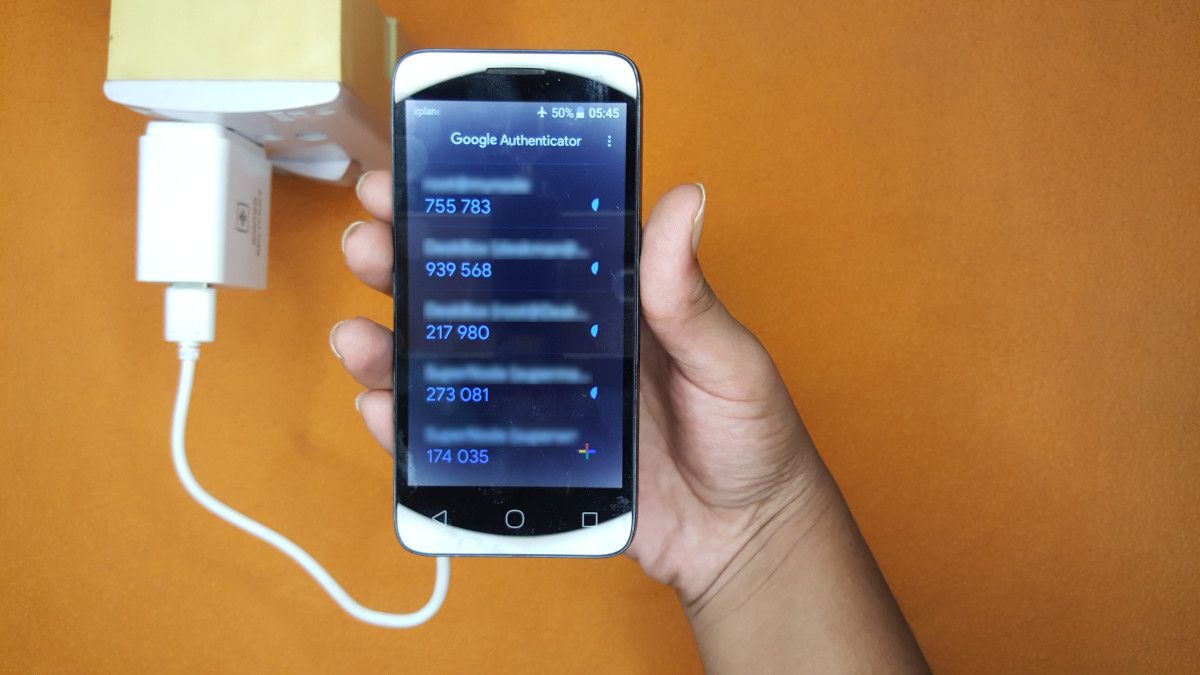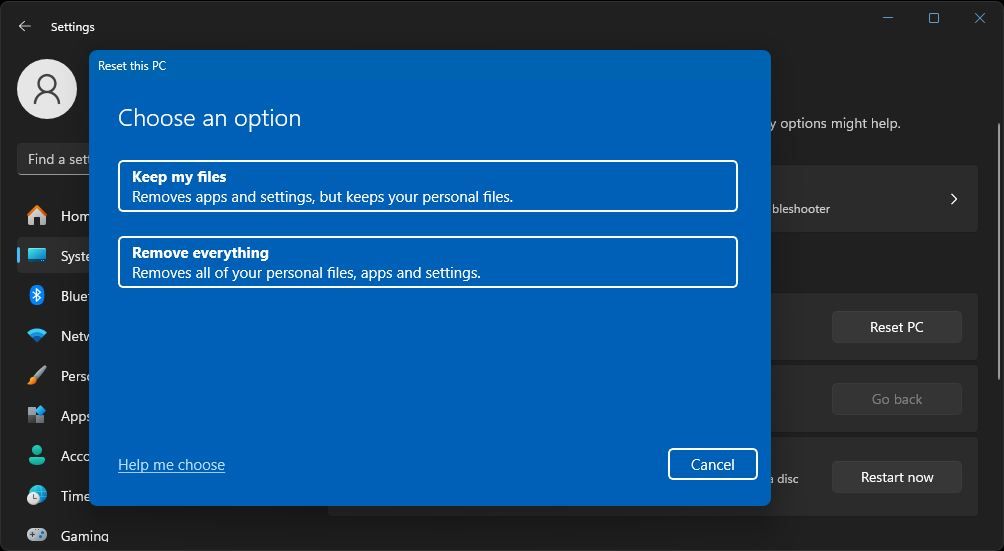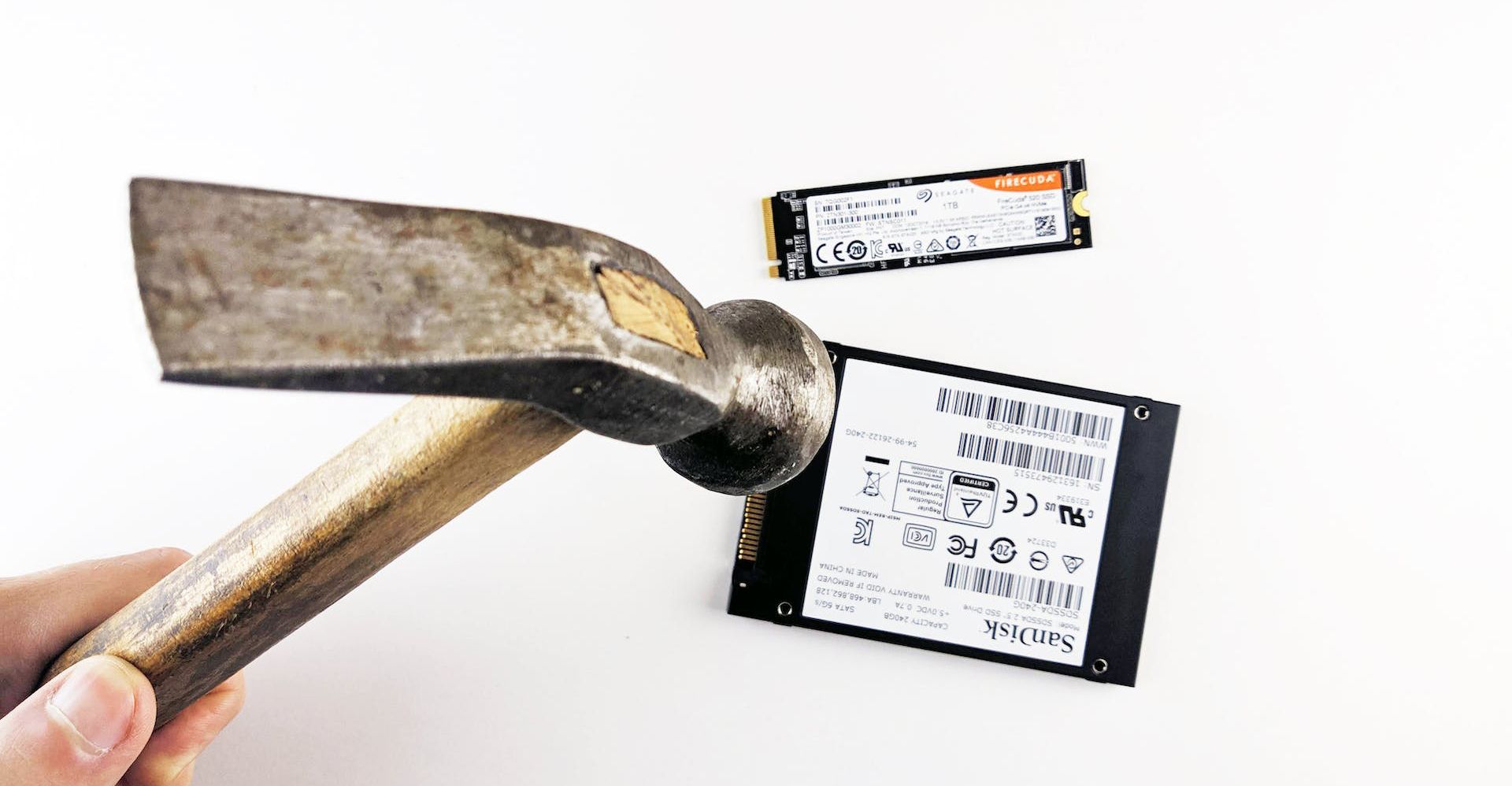
Key Takeaways
- Always back up your data before disposing of any hardware. Transfer valuable data to multiple mediums to ensure it is safe before disposal.
- Remove connected accounts, log out of all applications, and remove devices from accounts to prevent unauthorized access.
- Make hard drive data unreadable by utilizing data-wiping software or encryption methods to protect sensitive data on your hard drive.
Disposing of old tech is risky. Today, our devices, such as phones, laptops, and even TVs, are treasure troves of personal information. Selling your old phone or computer is a great way to make a few bucks, but make sure you've completely cleaned your data from it first.
1. Back-Up Data
When preparing technology for disposal or sale, it's easy to destroy data inadvertently. So, before doing anything else, ensure that all your valuable data is backed up, even if you believe you no longer require it.
The best practice is to transfer the data to multiple mediums, like a cloud service, external hard drive, flash drive, or the replacement device itself. This way, you can rest easy knowing your photos, important documents, and precious memories are safe before selling your old hardware.
2. Remove Connected Accounts
Nowadays, user accounts tend to be connected to devices via a device ID rather than a login. Logging out of an app isn't always enough to prevent someone from gaining access to your accounts.
If you're selling a device, failing to unlink devices from accounts may result in the new user being unable to use it. This is particularly relevant for home security devices such as doorbell cameras, IP cameras, and smart home devices. If you're selling or disposing of a smartphone or computer, log out of all applications, especially financial and banking accounts.
If you use an OTP authenticator, such as a Google Authenticator, you must back it up before selling. You can back up Google Authenticator and other OTP apps, but if it's impossible, you need to re-create the keys from each account onto your new device from scratch before removing them. This step is important as you may lose access to any account requiring the authenticator for multifactor authentication. After completion, remove the authenticator by uninstalling it.
3. Make Your Hard Drive Data Unreadable
Simply deleting your laptop or computer files or formatting a hard drive is not enough to prevent others from reading the data. Instead, use data-wiping software to wipe your drive or encryption to render the data on your hard disk unreadable.
In the case of Network Attached Storage (NAS) devices, in addition to wiping the data, you should destroy the RAID configuration by rebuilding it according to supported RAID types before disposal. This process ensures that the new owners cannot recover any existing data.
4. Factory Resetting Devices
A factory reset returns the device to its original state, as it was when first purchased. This erases all data and settings, providing a clean slate for the next user.
Before factory resetting the device, ensure you remove it from linked accounts as in step 2.
5. Remove or Retain Your Hard Drives
Sometimes, the most effective method is the most direct: remove and retain the hard disk drives from your devices for later destruction (or reuse!). This is particularly important for hard disks with significant storage capacity and sensitive data. Removing the hard disk ensures the new owner can never retrieve your information.
Storage removal and destruction are not recommended for smartphones or devices with batteries. Piercing the integrated lithium-ion battery can cause rapid combustion or release extremely hazardous vapors. It's best to leave these devices to the professionals.
6. Professional Data Destruction Services
For ultimate peace of mind, consider using a professional data destruction service.
It's surprisingly difficult to completely destroy a hard disk, as professional data recovery services excel at piecing your data back together. However, since most folks aren't sitting on nuclear secrets, smashing a hard disk into tiny fragments is normally enough. If in doubt, call a professional data shredding service.
Professional drive destruction guarantees no one will ever get their hands on your data. Professional destruction methods usually involve degaussing with high-powered magnets, incineration, shredding, and pulverization.
7. Check For Hidden Data
Many devices store data where you least suspect it. Inspect all devices for any hidden sources of data. Some notable examples include:
- Network Routers and Switches: These log DNS requests, URLs, and connection requests. Networking devices should be factory reset before being disposed of or sold.
- Printers: They keep copies of everything they've ever printed or scanned, generally using internal storage. It is recommended to remove this storage to destroy this data.
- Smart Home Devices: TVs, cameras, and even smart fridges can retain poorly stored copies of your Wi-Fi password.
In most cases, a factory reset should delete any data associated with you.
8. Dispose of Individual Components
If you're throwing away your old technology, it's recommended to separate individual components such as RAM, hard disks, and SD cards in separate bags and dispose of them at separate intervals.
This stops anyone from piecing together the devices and accessing your data.
9. Remove Serial Numbers
A serial number is a unique string of letters and numbers uniquely identifying your device. Serial numbers are located on a sticker in a hidden place, such as on the bottom or back of the device.
When disposing of a device, it's best to remove this sticker. This will prevent fraud, such as warranty claims made by anyone who finds and uses the device once it has been thrown away.
10. Reconsider Disposal or Selling
Old devices that still work can be repurposed. For example, Linux can be installed on an older computer, extending its lifespan considerably.
Finally, consider the environmental impact of disposing of technology. Research some local recycling centers, or contact schools or HAM radio clubs that can use your old devices for other purposes.




Post a Comment